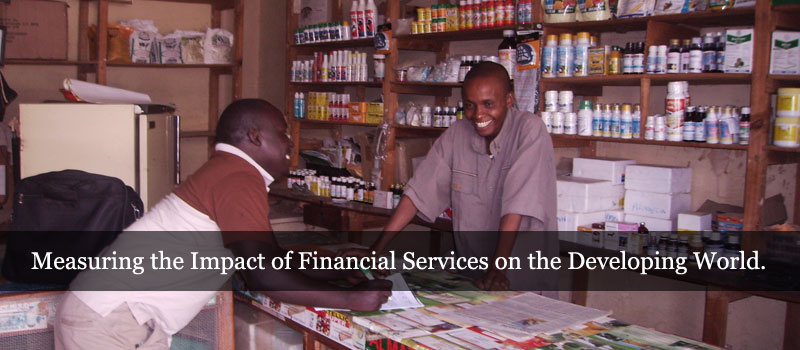Money in a Pot: Has OIBM Altered Savings in Rural Malawi?
Geetha Nagarajan, IRIS Center. July 2010.
“I have my own mobile bank” Ms. N’gambe told me in November 2007, pointing to her healthy young goat grazing in her front yard of mud-walled, grass-thatched roof, two room house in a village in Dedza, Central Malawi. Ms. N’gambe was a 42 year old female household head raising 3 children by selling vegetables and fried donuts (mandaz) on the pavement of Dedza market about a four kilometer walk from her house. Her husband was a wage labor worker (ganyu) died in an accident in 2005.
While she kept some cash at home in a pot for buying food and for emergency purposes, she also borrowed from her neighbors to pay school fees on time. She also lent out money to her neighbors in need so they will reciprocate the favor. She did not hold any savings with formal or informal external agents for lack of funds and high transactions cost. She saw her neighbors paying a fee to save with commercial banks that also charged for inactive and small accounts, and did not provide any loans. Others were using Rotating Savings and Credit Associations (RoSCAs) where members were not honest. In 2007, there were about four commercial banks, a post office and the newly introduced mobile bank on wheels for Opportunity International Bank of Malawi providing savings services in the area.
I met Ms. N’gambe again in June 2010 at the same Dedza market where she still sells mandaz and vegetables, but now in a tin-roofed stall. She works from 7:00 a.m. to about 4:00 p.m. every day at the stall and sells about 2,000 mandaz at MWK10 (US$0.06) per piece. On average, she made a net profit of about US$30 per day in the last month. She showed me her OIBM biometric card that is now her mobile bank, and not the goat!! She opened her savings account with OIBM’s mobile bank in August 2008 after she repeatedly saw the big red vehicle parked at the entrance of the post office twice a week and heard from other market vendors that it’s a safe bank that also makes small group loans to people like her. As an OIBM member, she was hoping to save money to send her eldest son to technical school and also obtain a loan by the end of the year to buy a new stove and a bigger vat to fry the donuts. The OIBM mobile van stops about a half kilometer from her market stall.
When I again met her, she had come that day to gather information on her eligibility to obtain an individual loan. Since she became an OIBM member, she had joined a club of 8 women to take three loans from OIBM. With each of the four month long loans for about US$100 each, she bought a new stove and a vat to expand her business in the past year. While she kept some savings at OIBM last year, she reported a very small amount as current balance at the OIBM mobile bank. Indeed, the savings appeared to be the remaining loan amount that was deposited into her savings account for withdrawals. She still holds some cash at home for emergencies, which was stolen a few times and was once eaten by termites, but no more savings in goats!! She still lends small amounts to her neighbors in case of emergency in anticipation of reciprocation.
So, why has she not got rid of her pot to save her cash? Why so little saved at OIBM and why is she seeking an individual loan?
Several reasons are at play here: The weekly visit of the mobile bank tends to have limited her ability to save more, especially for emergencies and for getting education loans for her son. She experienced difficulty in using her OIBM biometric card at an ATM of NBS - the commercial bank branch near the market with whom OIBM shares the ATM platform. With a longer grace period for loans, she thinks she could save more, although it is likely that she may only delay withdrawal of her entire loan amount deposited in her account. She also reported that it was difficult for her to know her balance without a physical passbook. Her biometric card could only be read at the mobile bank. When one of the members of her club defaulted, she had to withdraw her savings at OIBM to pay for the group so they can be eligible for future loans. The incident reduced her confidence in parking her savings at OIBM. She is, however, willing to save more if she can access individual loans so she is not liable for defaulting members. It is clear that she has grown her business to date with OIBM help and may, in the future, integrate savings or more savings with OIBM into her activities with some changes in the product and services by OIBM. Indeed, I met many OIBM mobile bank members, specifically small and microenterprise owners, who also simultaneously maintain savings accounts with commercial bank branches in Dedza to manage their cash flows on non-mobile bank days. While many were banking with those organizations before OIBM came to Dedza, they preferred to open an account with OIBM to primarily access loans. Many reported that OIBM is the only bank in that area that provides small loans with flexible and affordable terms and conditions. It is likely that many business owners, and repeat group loan borrowers, at OIBM may prefer individual loans and more frequent mobile bank visits. These product and service alterations may potentially boost their savings kept at OIBM and get rid of the at-home pots or at least reduce the size of the pot so that termites may need to diversify their diet!




